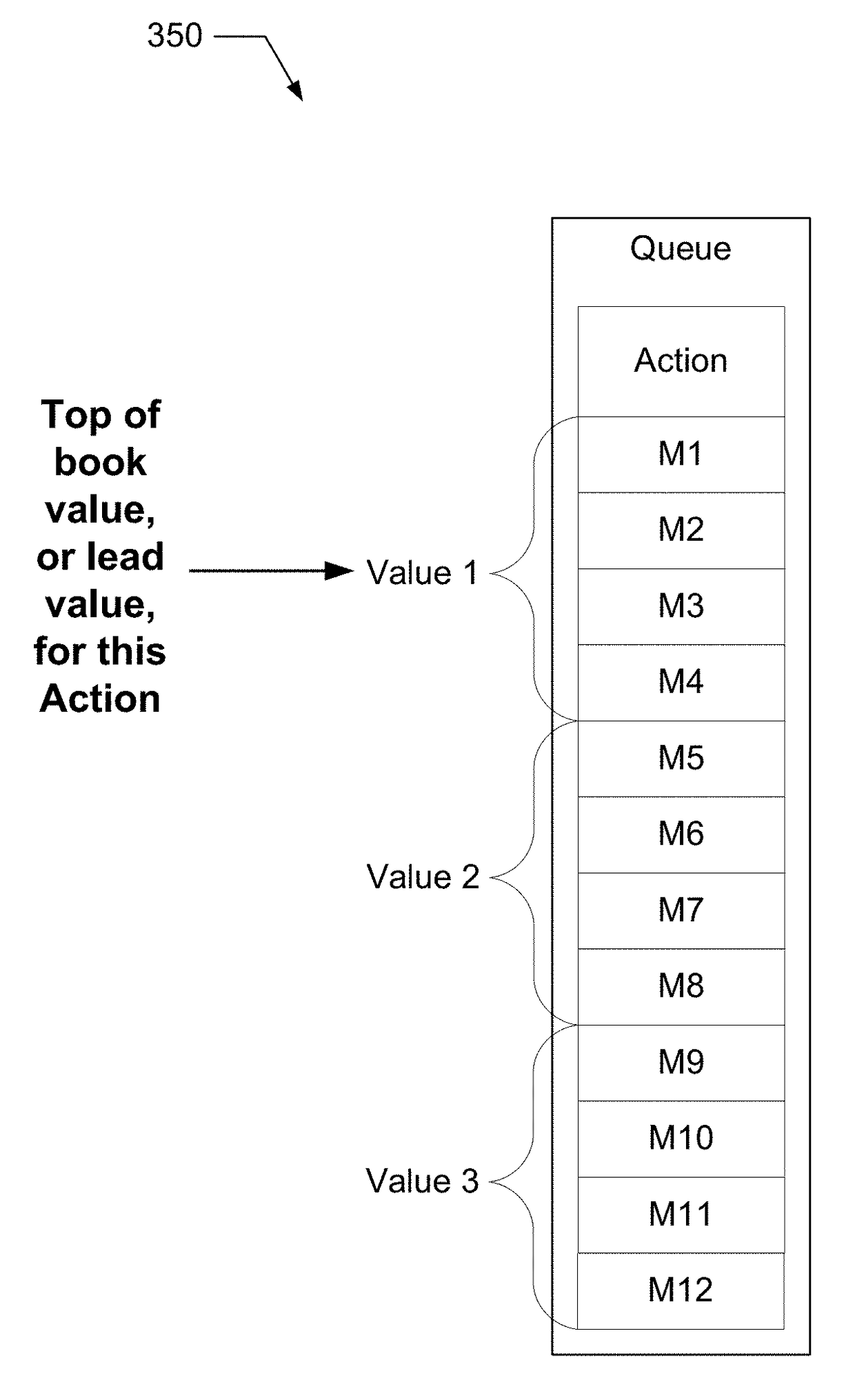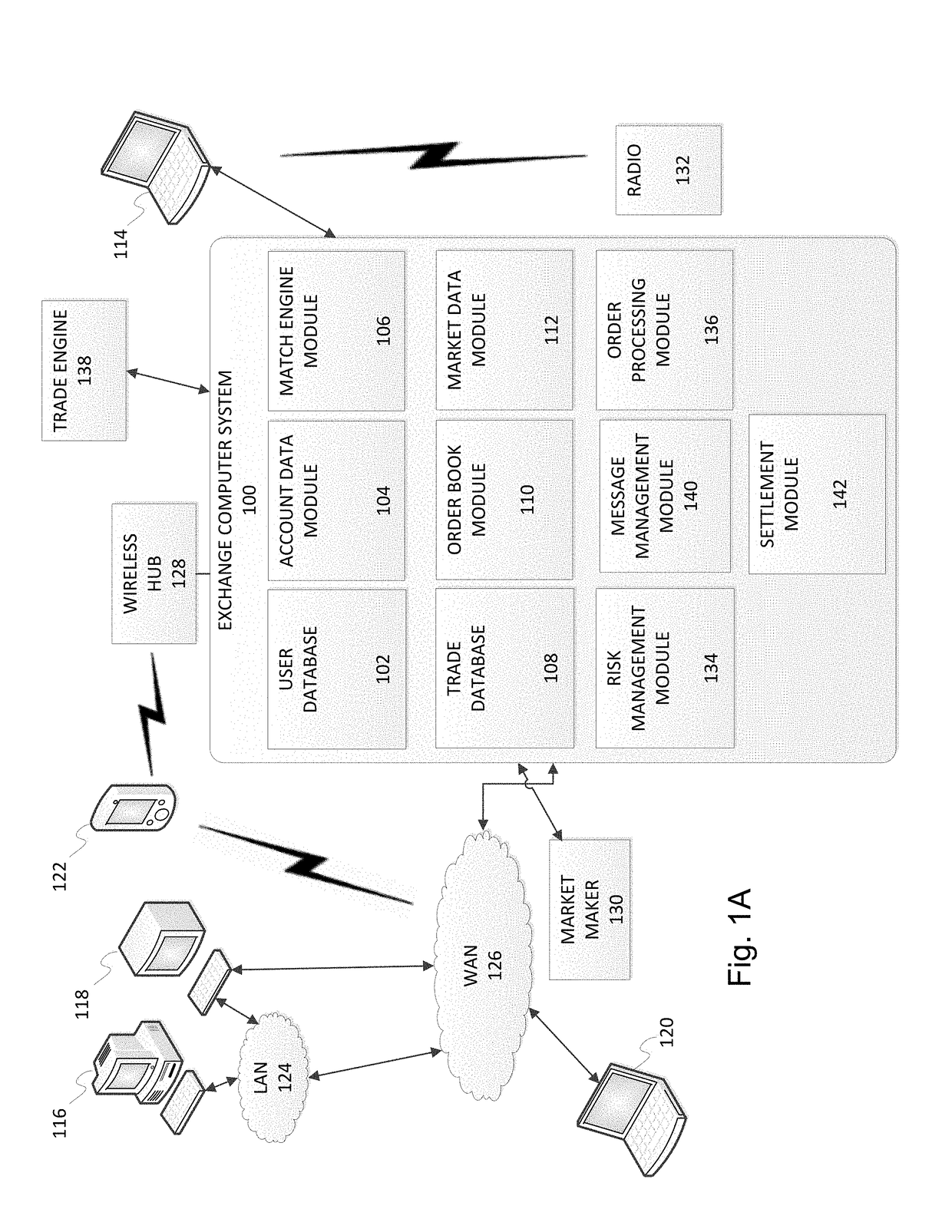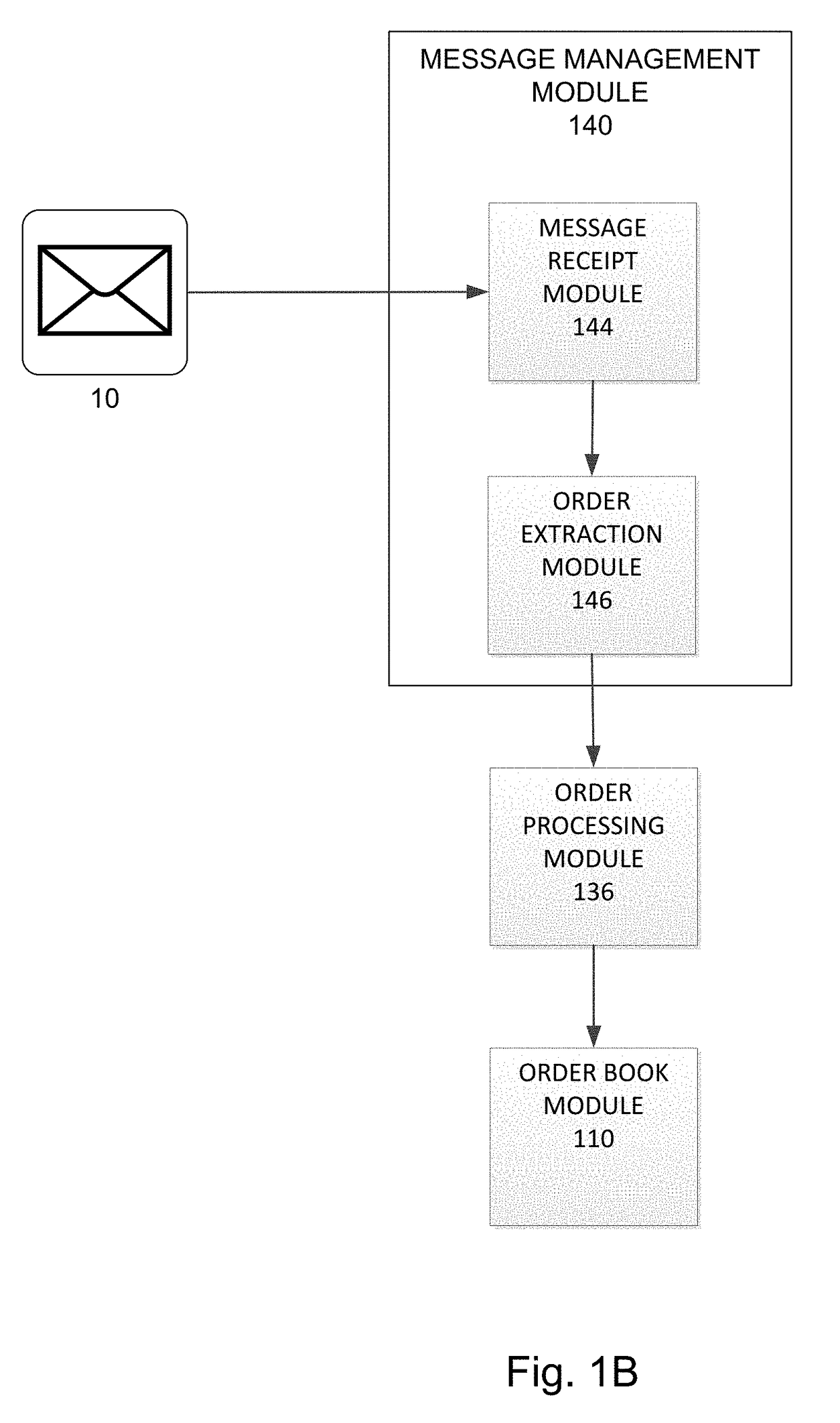Object values may change over time, and some changes to the value of an object may be undesirable or based on incomplete or inaccurate data.
Routing each message through integrity systems can create a
bottleneck, creating latency and adversely affecting processing speeds.
The routing system may also access data structures storing information about a current environment state to determine whether a new message should be routed through the transaction integrity modules, thereby incurring the additional processing time thereof.
Unfortunately, this improved speed and efficiency also increases the speed at which problems may occur and propagate, such as where the market ceases to operate as intended, i.e., the market no longer reflects a true
consensus of the value of traded products among the market participants.
Such problems are typically evidenced by extreme
market activity such as large and / or rapid changes in price, whether up or down, over a short period of time, or an extreme volume of trades taking place.
In particular, traders, whether human or electronic, may not always react in a rational manner, such as when presented with imperfect information, when acting in fraudulent or otherwise unethical manner, and / or due to faulty training or design.
For example, while communications technologies may have improved, inequities in
access to information and opportunities to participate still exist, which may or may not be in compliance with legislative, regulatory and / or ethical rules, e.g., some traders receive information before other traders, or some traders may be able to process received information and / or place trader orders more quickly than others.
In many cases, irrational trader behavior may be triggered by a market event, such as a change in price, creating a
feedback loop where the initial irrational reaction may then cause further market events, such as a continued price drop, triggering further irrational behavior and an extreme change in the price of the traded product in a short period of time.
High speed trading exacerbates the problem as there may be little time for traders, or those overseeing them, to contemplate their reactions and / or take corrective action before significant losses may be incurred.
However, transaction integrity modules typically comprise intensive computing routines that increase latency and processing time to an exchange computing system.
In a futures market that has few resting orders but many stop orders, an order executed at a limit price can cause a cascading execution of buy or sell stop orders.
A problem may occur when one or more trades bring many stop orders into the market.
Transaction integrity modules, however, may significantly increase the processing times of an exchange computing system, thereby reducing the volume of, and / or slowing the rate at which, messages may be processed by the
electronic trading system.
Accordingly the resulting problem is a problem arising in computer systems due to the high volume of messages processed by an exchange computing system.
In addition, it should be appreciated that
electronic trading systems further impose additional expectations and demands by market participants as to transaction processing speed, latency, capacity and
response time, while creating additional complexities relating thereto.
In those markets, the failure of one participant can have a
ripple effect on the solvency of the other participants.
Conversely, CME's mark-to-the-market system does not allow losses to accumulate over time or allow a
market participant the opportunity to defer losses associated with market positions.
This may result in penalizing the trader who makes an errant trade, or whose underlying trading motivations have changed, and who cannot otherwise modify or cancel their order faster than other traders can submit trades there against.
Furthermore, while it may be beneficial to give priority to a trader who is first to place an order at a given price because that trader is, in effect, taking a risk, the longer that the trader's order rests, the less beneficial it may be.
However, a trader who took a risk by being first to place an order (a “market turning” order) at a price may end up having to share an incoming order with a much later submitted order.
This results in an escalation of quantities on the order book and exposes a trader to a risk that someone may trade against one of these orders and subject the trader to a larger trade than they intended.
In the typical case, once an incoming order is allocated against these large resting orders, the traders subsequently cancel the remaining resting quantity which may frustrate other traders.
As an intermediary to electronic trading transactions, the exchange bears a certain amount of risk in each transaction that takes place.
In some cases, the outright market for the deferred month or other constituent contract may not be sufficiently active to provide market data (e.g., bid-offer data) and / or trade data.
For example, upon detecting an undesirable condition within the data
transaction processing system, transaction integrity modules may cause halting of the matching processor, which prevents the matching processor from matching messages, e.g., places the system or data objects related to the undesirable condition in a reserved state.
In other words, the routing module may cause messages to completely bypass the transaction integrity module.
Transaction integrity module processing is
time consuming and increases latency, in part because it compares each value to predetermined and / or dynamic thresholds.
Thus, the routing module only allows such messages to enter the transaction integrity module.
Thus, the routing module significantly reduces the overall processing time of a match engine module.
However, if the exchange computing system receives an order or message to trade product at a value or price that violates the conditions defined herein, transaction integrity modules may take, or otherwise cause, a different action.
However, setting either a maximum or
minimum price limit and continuing to allow trading may not address the underlying problem which caused the extreme market movement and the market may reverse and undergo an extreme movement away from the set limit, such as due to the reaction of algorithmic trading systems.
Additionally, the illustrations are merely representational and may not be drawn to scale.
 Login to View More
Login to View More  Login to View More
Login to View More 


